Before screens dominated our homes, a rainy day meant one thing: pulling out the board games. These cardboard treasures, often stored in well-worn boxes with missing pieces and folded boards, brought families together around kitchen tables and living room floors. The simple roll of dice or strategic placement of game pieces created memories that have lasted generations. Here are twelve classic board games that transformed ordinary afternoons into extraordinary adventures.
1. Monopoly (1935)

Parker Brothers’ real estate trading game taught an entire generation about the cutthroat world of property ownership long before they’d ever sign a mortgage. Players circled the board buying properties, building houses, and hoping opponents would land on their hotels while desperately trying to avoid bankruptcy. Family Monopoly sessions could stretch for hours, sometimes continuing across multiple rainy weekends with the board carefully preserved between play sessions. Monopoly enjoys unprecedented popularity, with Hasbro reporting in over a billion players around the globe and hundreds of iterations on the classic game.
What made Monopoly truly special was how it created a miniature emotional rollercoaster—the thrill of collecting a complete color set, the agony of landing on Boardwalk with a hotel, and the subtle negotiations that taught children the art of dealmaking. Arguments over house rules (like collecting money when landing on Free Parking) became family traditions passed down through generations, while the iconic tokens—the dog, thimble, and boot—became cherished artifacts that players would call dibs on before the game even started.
2. Battleship (1967)

Milton Bradley’s naval combat game transformed children into military strategists commanding fleets from their bedroom floors. Players secretly arranged their ships on a grid and took turns calling out coordinates, hoping to hear the satisfying “hit!” that meant they’d found an enemy vessel. The game’s iconic red pegs marking hits and white pegs tracking misses created a visual record of the battle that unfolded differently each time. Battleship’s origins are a bit murky, but as reported by Military Times, it is all as thrilling as picking just the right coordinates against your opponent in this game.
The game’s genius lay in its perfect balance of luck and strategy—players needed to think logically about ship placement and targeting patterns while still enjoying the suspense of each guess. The hinged plastic cases with their grid boards and ship pegs were technological marvels to young players, who would often personify their vessels with dramatic sinking sounds when an opponent finally found their aircraft carrier. Battleship taught patience, deductive reasoning, and the ability to maintain a poker face when an opponent’s missile came dangerously close to your destroyer.
3. Yahtzee (1956)

Milton Bradley’s dice game combined gambling excitement with strategic decision-making, all with just five dice and a scorepad. Players took turns rolling dice, strategically choosing which to keep and which to re-roll as they attempted to create various combinations worth different point values. The tension built as players balanced the safe play against the risky pursuit of a Yahtzee—five matching dice worth a precious 50 points. GoUpstate classifies Yahtzee as the most popular dice game of all time.
What made Yahtzee addictive was the perfect combination of chance and choice—even terrible rolls could sometimes be salvaged with clever scoring decisions. The distinctive sound of dice rattling in the cup and tumbling across the table became the soundtrack of countless family game nights. Players developed personal rituals and superstitions around their rolling techniques, from gentle shaking to elaborate cup-thumping routines believed to summon the elusive Yahtzee.
4. Sorry! (1934)
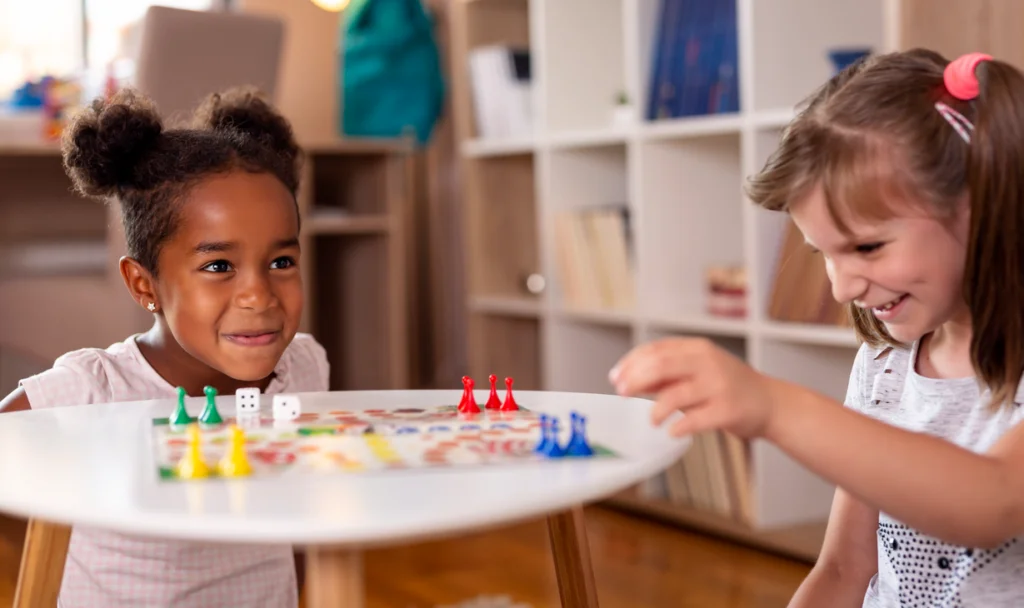
Parker Brothers’ game of sweet revenge gave children permission to be strategically ruthless while still maintaining the façade of politeness through the obligatory “Sorry!” exclamation. Players moved pawns around the board using cards instead of dice, aiming to get all four of their pieces safely home while sending opponents’ pieces back to start at every opportunity. The game’s simple mechanics made it accessible to younger players while still engaging older children and adults.
The game’s emotional appeal came from its dramatic reversals of fortune—a player in the lead could suddenly find all their pieces sent back to start, while someone trailing behind could surge ahead with a lucky card draw. The colorful pawns sliding around the track became characters in a miniature drama where fortunes changed with each card flip. Sorry! taught children important life lessons about resilience and handling setbacks, all while teaching them the subtle art of the insincere apology.
5. Trouble (1965)

Kohner Brothers’ race game featured an innovative “Pop-O-Matic” die roller—a plastic bubble in the center of the board that contained a single die that players pressed to roll. The satisfying “pop” sound became so associated with the game that children would mimic it long after the game was put away. Players moved their colored pegs around the track, trying to get all four safely home while bumping opponents back to start.
The game’s mechanical innovation—the Pop-O-Matic bubble—eliminated arguments about fallen dice and added a tactile element that was irresistible to children. The simple rules made it accessible to players as young as five, while the strategic decisions about which peg to move kept older players engaged. Trouble often became the first board game children could play independently with siblings, creating a sense of accomplishment when they finally mastered the strategies needed to win.
6. The Game of Life (1960)
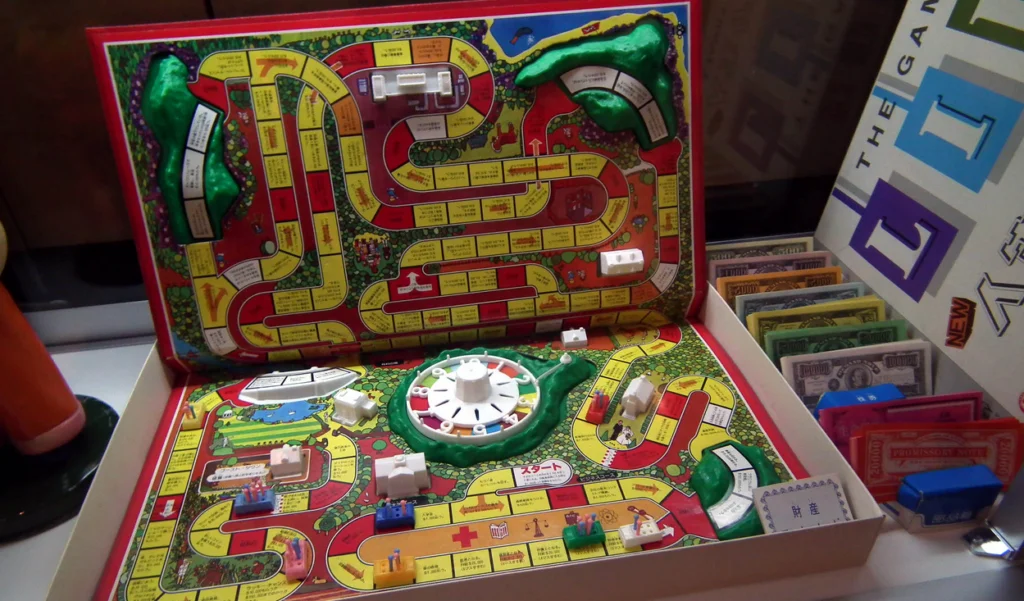
Milton Bradley’s journey from college to retirement let children test-drive adult decisions decades before they’d face them in reality. Players moved car game pieces containing little pink and blue pegs (representing family members) along a winding track, making career choices, getting married, buying insurance, and ultimately aiming to retire with the most money. The three-dimensional board with its plastic mountains and buildings created a miniature world that captured children’s imaginations.
Life’s most distinctive feature was its spinner in place of dice—a clicking wheel that determined how many spaces players could move on their journey through adulthood. The game normalized major life milestones while simplifying complex financial concepts into child-friendly decisions. Many adults still remember the strange mix of excitement and apprehension they felt when adding tiny pink or blue pegs to their car, representing the children their plastic families would eventually include.
7. Backgammon (Ancient Origins, Modern Form 1920s)
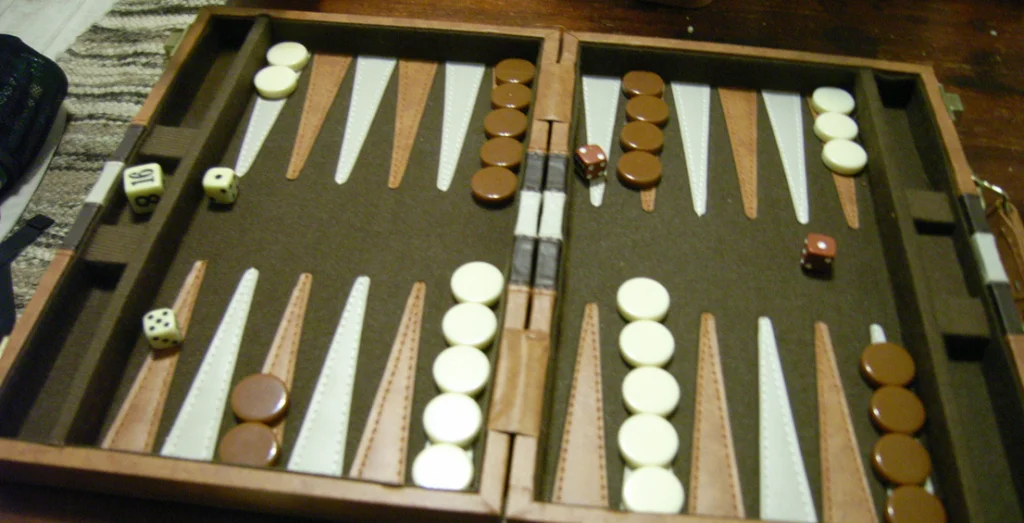
This ancient game of strategy and chance has roots dating back 5,000 years, making it one of the oldest known board games still widely played today. Players moved checkers around a distinctive triangular board based on dice rolls, aiming to bear off all their pieces before their opponent. The game combined tactical positioning with probability assessment, teaching children mathematical thinking disguised as entertainment.
What made backgammon special was its perfect balance of accessibility and depth—the rules could be learned in minutes but mastering the game could take a lifetime. The distinctive clacking sound of checkers hitting the wooden board created a sophisticated ambiance that made children feel grown-up. Many families had heirloom backgammon sets passed down through generations, complete with weighted pieces and leather-bound cases that gave the game an air of timeless elegance.
8. Chess (6th Century)
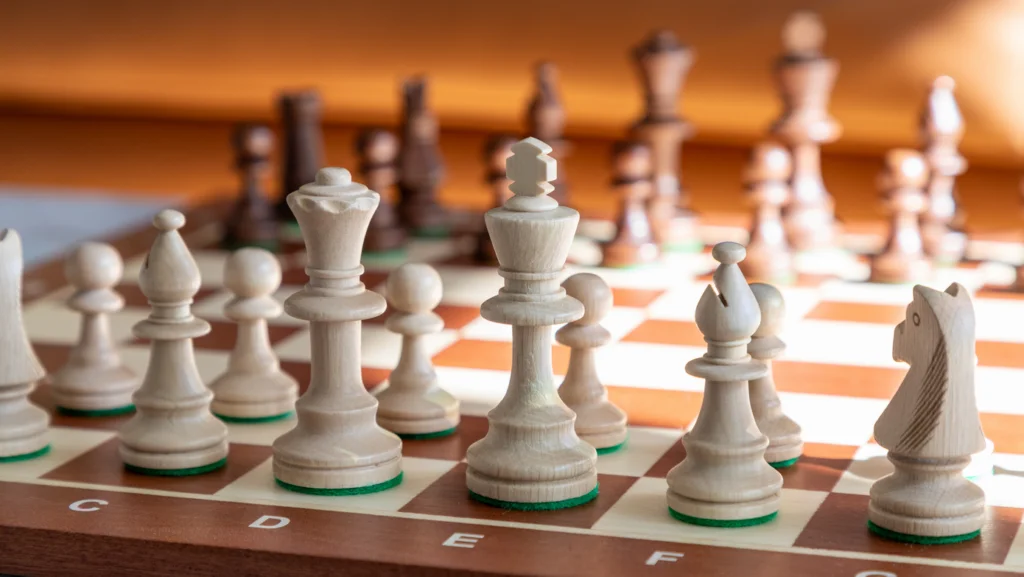
The ultimate game of strategy transformed kitchen tables into battlefields where knights, bishops, and pawns waged war across 64 squares. Children learning chess entered a centuries-old tradition, often taught by parents or grandparents who passed down not just rules but personal strategies and opening moves. The distinctive pieces—from the powerful queen to the humble pawn—became characters in a drama where spatial thinking and forward planning determined the victor.
Chess taught children patience and consequences like no other game—a single careless move could lead to disaster many turns later. The game’s global language meant that children who mastered it could play with anyone regardless of spoken language barriers. Many adults still remember the profound sense of accomplishment they felt upon winning their first game against a parent who had previously seemed invincible, marking a rite of passage in their intellectual development.
9. Scrabble (1948)
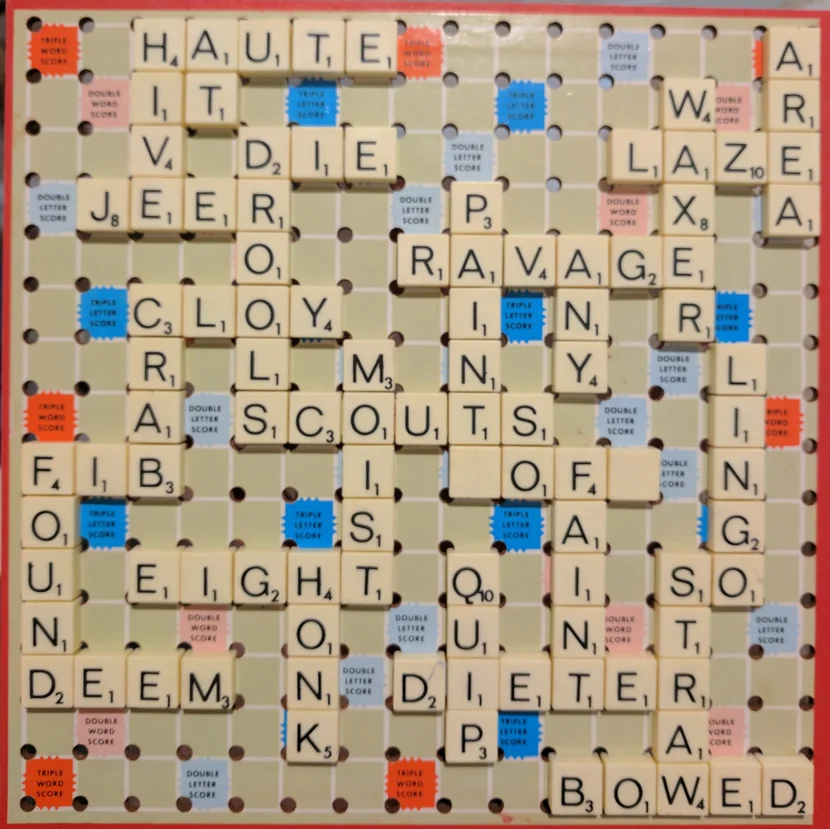
Selchow & Righter’s word game turned vocabulary into a competitive sport long before spelling bees were televised. Players drew letter tiles and constructed words on the board, strategically placing them to utilize bonus squares that multiplied word values. The game created a unique tension between playing safe with short, simple words or risking invalid plays with more elaborate vocabulary.
Scrabble’s genius was in making linguistic knowledge into a form of currency—a rare Z or Q tile could change a player’s fortunes if played correctly. The distinctive clacking sound of wooden tiles being shuffled in the bag became a pleasant ritual that signaled the game’s beginning. Children often kept personal lists of unusual two-letter words or Q-without-U options, creating a parallel education in vocabulary that schools could never replicate.
10. Clue (1949)

Parker Brothers’ murder mystery game transformed players into detectives solving a crime in a mansion filled with suspects. Players moved room to room on the board, making suggestions about who committed the murder, with which weapon, and in which room, gradually eliminating possibilities through deduction. The solution remained sealed in a small envelope at the board’s center, revealed only when a player was ready to make their final accusation.
The game’s atmospheric elements—the mansion layout, the weapons tokens, and the colorful suspects—created an immersive experience that felt like stepping into a mystery novel. Children developed deductive reasoning skills while tracking information on small detective notepads included with the game. The dramatic moment of checking the solution envelope created a perfect climax to each game session, with incorrect accusations leading to player elimination and adding stakes to each theory.
11. Risk (1959)
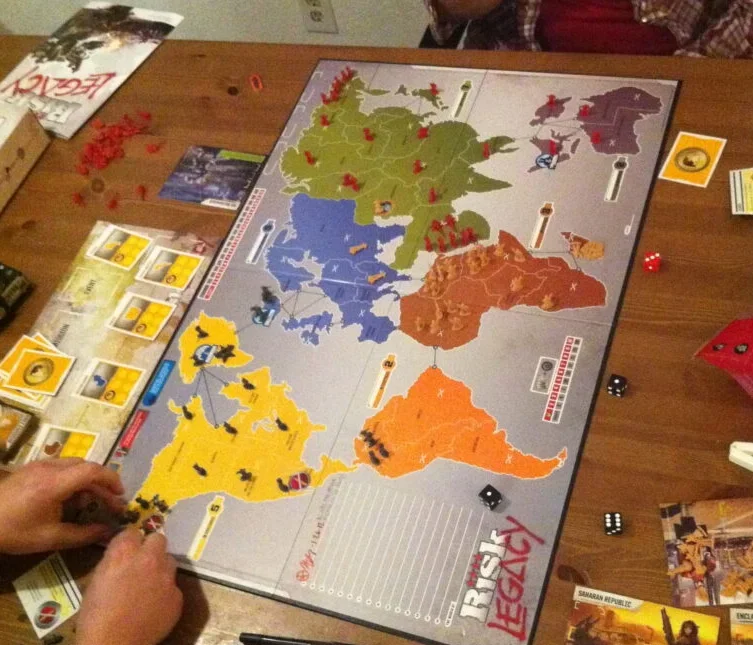
Parker Brothers’ game of global domination let children command armies and conquer continents from the safety of their living rooms. Players placed army units on territories, rolled dice for battles, and executed strategic campaigns to control entire continents. A single Risk game could span hours or even days as alliances formed and shattered across the cardboard world map.
Risk taught children about geography while introducing concepts of resource management and strategic prioritization. The colorful army pieces—cavalry, infantry, and artillery—became extensions of the players themselves as they developed emotional attachments to certain territories or continents. Many adults still remember the distinctive sound of hundreds of small plastic game pieces being sorted and the feeling of power that came with rolling multiple dice during an important battle.
12. Candy Land (1949)
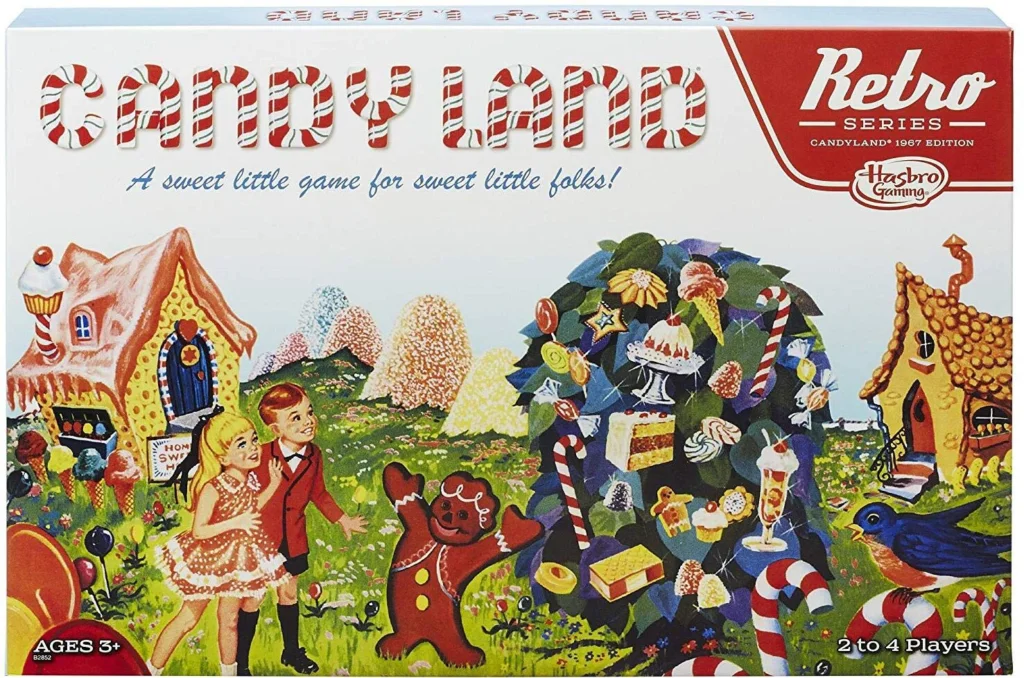
Milton Bradley’s simple race game required no reading skills, making it the perfect introduction to board games for the youngest players. Children moved gingerbread player pieces along a winding, rainbow-colored path through fantastical landscapes like Gumdrop Mountain and Molasses Swamp. The game relied entirely on drawing color cards rather than strategic decisions, creating a level playing field regardless of age.
What made Candy Land magical was its vibrant visuals and the fact that it created a shared activity that adults and pre-readers could enjoy together as equals. The colorful board with its fantasy candy landscapes sparked imagination and created a sensory experience that many children remembered long into adulthood. For countless Americans, Candy Land represents their first memory of formal game play, teaching the fundamentals of taking turns, following rules, and handling the emotions of winning and losing.
These classic games did more than just pass time on rainy days—they shaped how generations of children learned to think, plan, negotiate, and compete. Unlike today’s digital games with their perfect animations and instant feedback, these cardboard adventures required players to enforce rules themselves, negotiate disagreements, and use imagination to bring the game worlds to life. The skills developed around these game boards—from strategic thinking to gracious winning and losing—created lessons that extended far beyond the kitchen table, turning simple rainy day activities into formative experiences that many of us still treasure decades later.


